Abstract
Saline/air, blood/air, olive oil/air, and tissue/air (lung, kidney, liver, brain, muscle, heart, and fat) partition coefficients were determined for nine aliphatic hydrocarbons: n-pentane, 2,2-dimethylbutane, 3-methylpentane, 2-methylpentane, methylcyclopentane, n-hexane, cyclohexane, 3-methylhexane, and n-heptane. Blood/air partition coefficients were found to range between 0.38 (n-pentane) and 1.9 (n-heptane) and the value of the tissue/air partition coefficients rose from n-pentane to n-heptane. The tissue/air partition coefficients were significantly correlated with the blood/air partition coefficients (r = 0.92-0.98). According to the slope of the regression lines, the mean solubility of the nine aliphatic hydrocarbons in the different tissues was higher than in blood by the factors: lung 1.4 (range 1.2-2.1) heart 3.9 (range 0.5-4.5), liver 5.6 (range 5.5-13.5), kidney 5.2 (range 1.6-5.8), brain 6.5 (range 5.8-10.7), muscle 7.6 (range 1.8-8.8), and fat 205 (range 104-254). The blood/air and olive oil/air partition coefficients were significantly correlated with the boiling points and the molecular weights of the aliphatic hydrocarbons studied.
Full text
PDF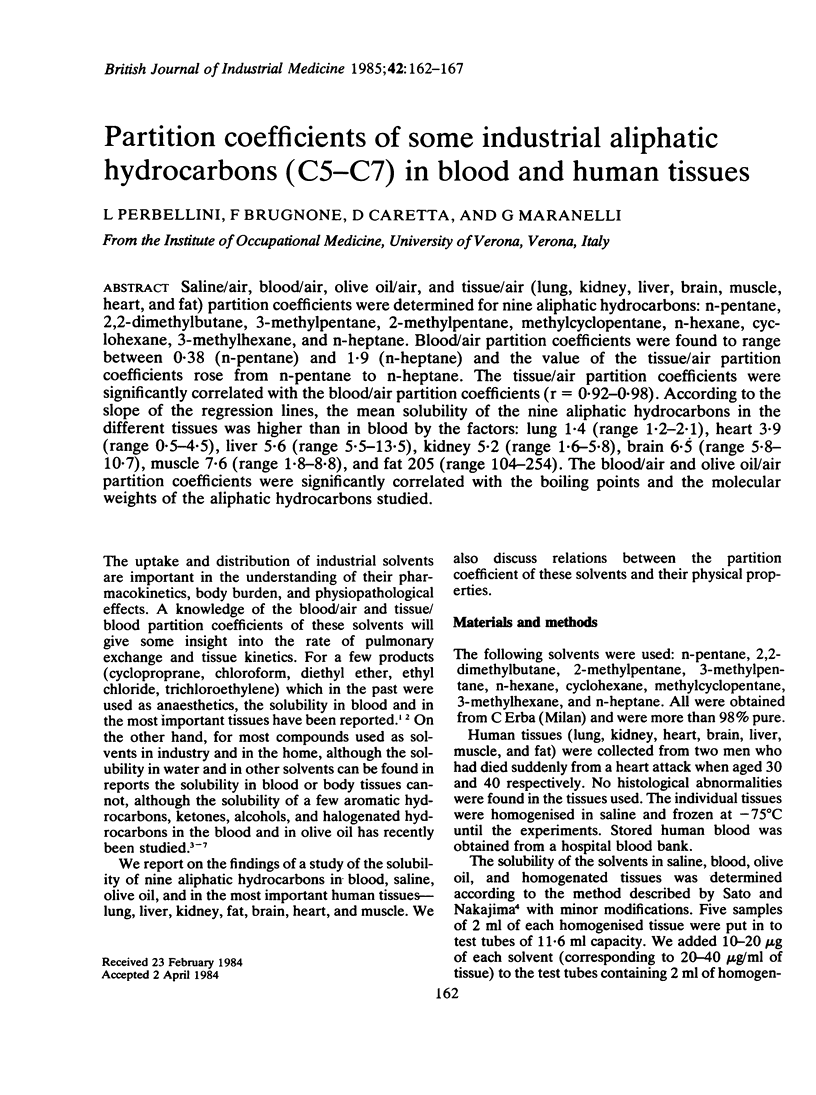

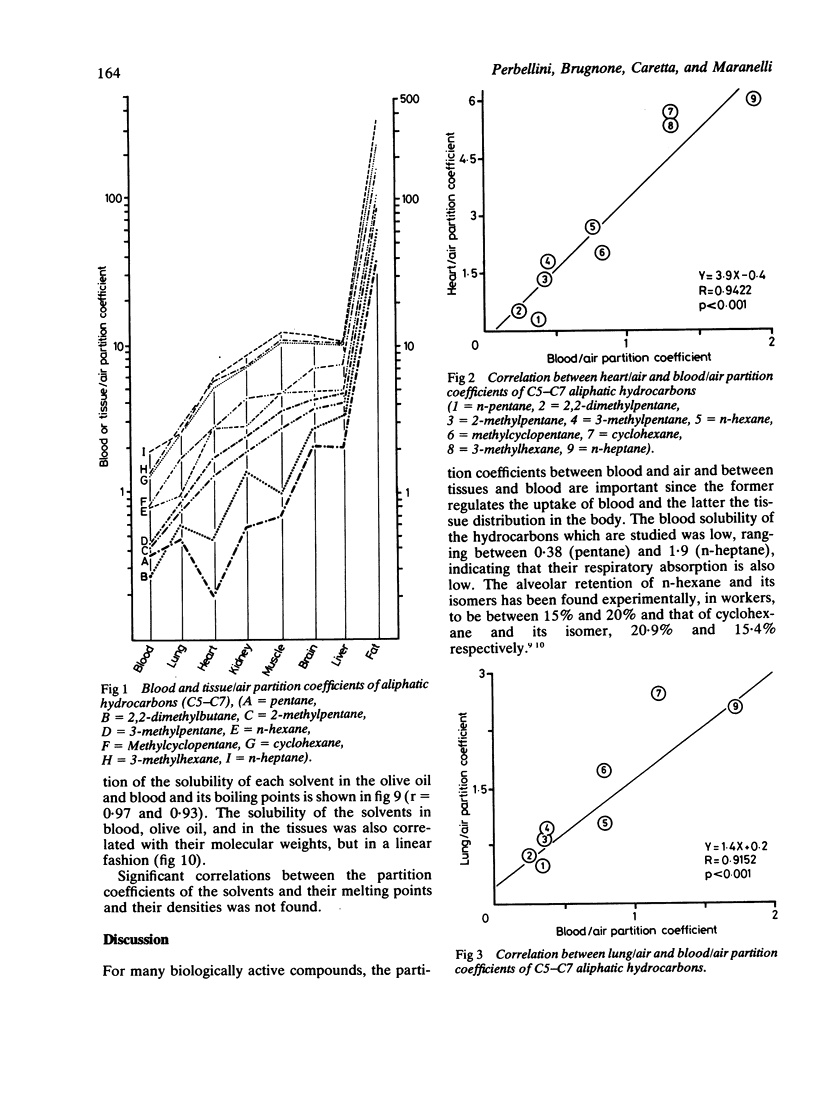
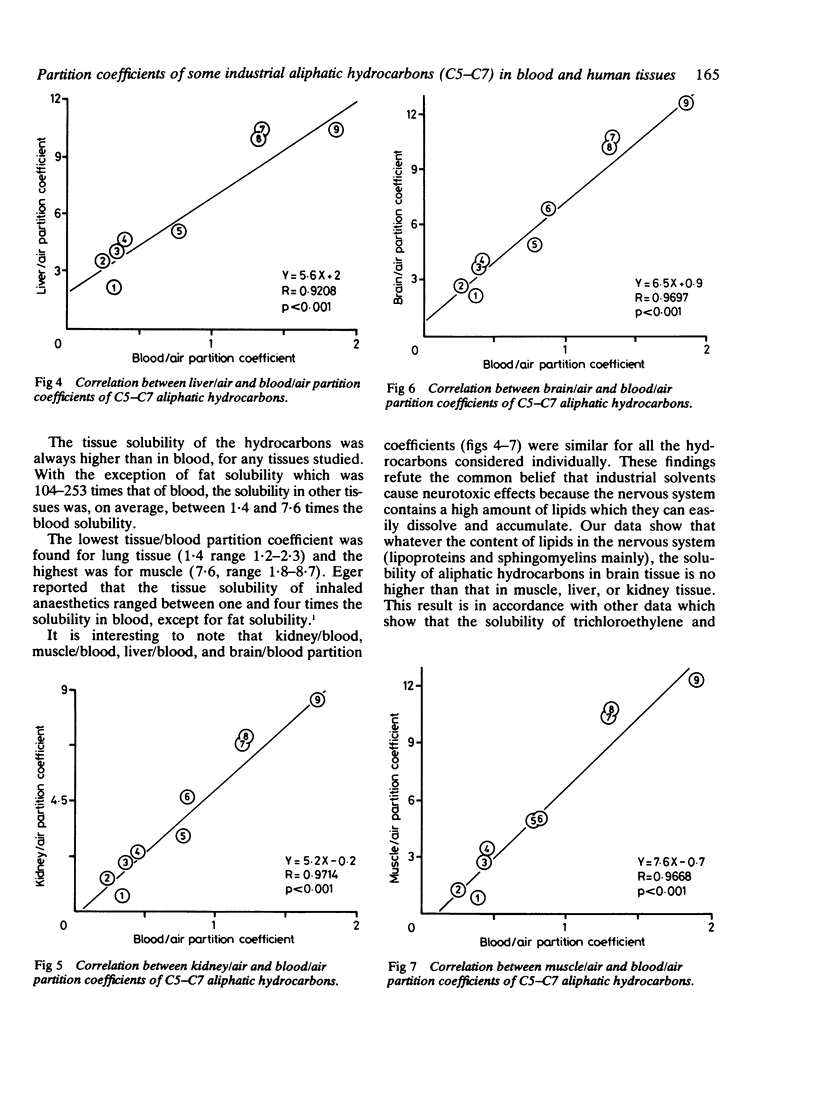
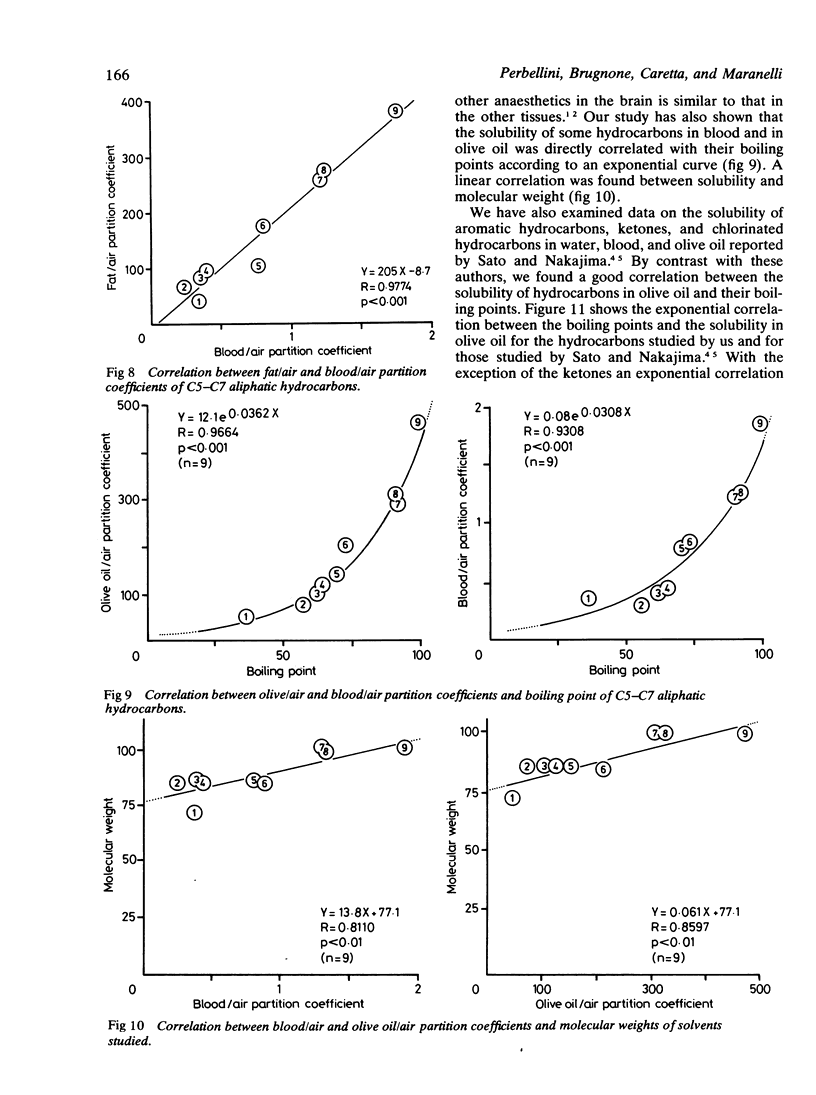
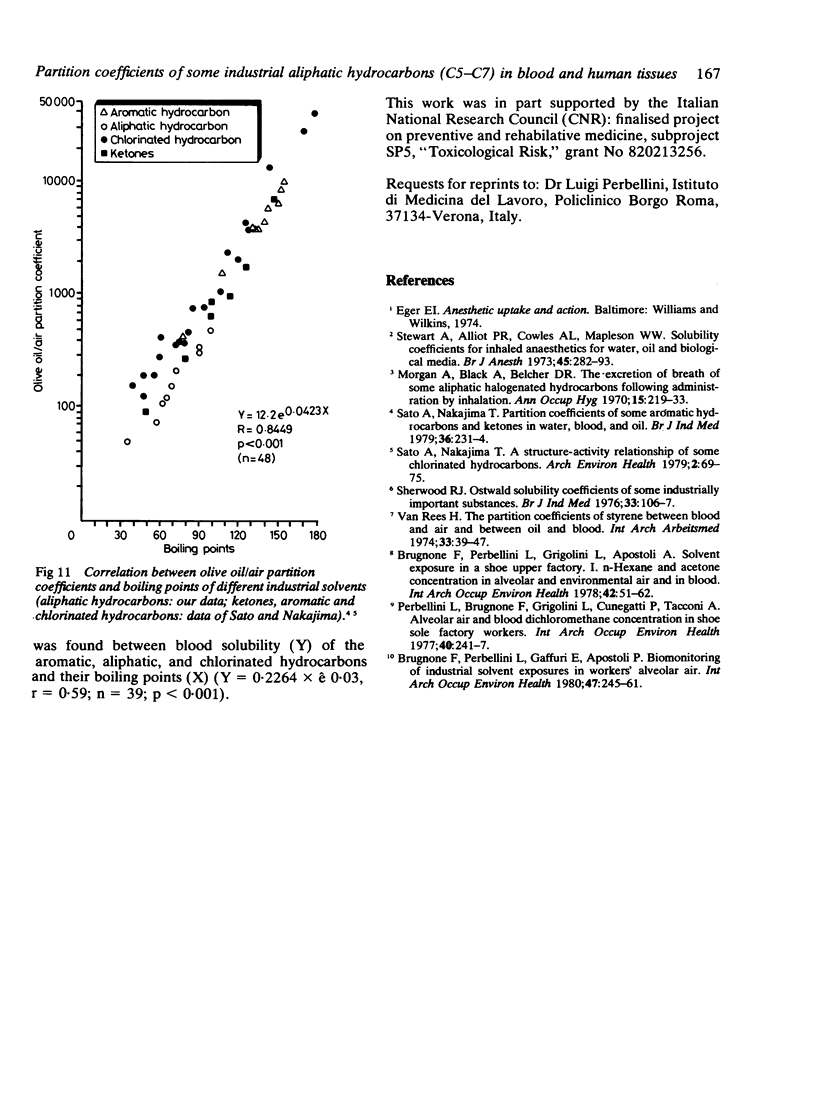
Selected References
These references are in PubMed. This may not be the complete list of references from this article.
- Brugnone F., Perbellini L., Gaffuri E., Apostoli P. Biomonitoring of industrial solvent exposures in workers' alveolar air. Int Arch Occup Environ Health. 1980;47(3):245–261. doi: 10.1007/BF00381682. [DOI] [PubMed] [Google Scholar]
- Morgan A., Black A., Belcher D. R. The excretion in breath of some aliphatic halogenated hydrocarbons following administration by inhalation. Ann Occup Hyg. 1970 Dec;13(4):219–233. doi: 10.1093/annhyg/13.4.219. [DOI] [PubMed] [Google Scholar]
- Perbellini L., Brugnone F., Grigolini L., Cunegatti P., Tacconi A. Alveolar air and blood dichloromethane concentration in shoe sole factory workers. Int Arch Occup Environ Health. 1977 Dec 22;40(4):241–247. doi: 10.1007/BF00381411. [DOI] [PubMed] [Google Scholar]
- Sato A., Nakajima T. A structure-activity relationship of some chlorinated hydrocarbons. Arch Environ Health. 1979 Mar-Apr;34(2):69–75. doi: 10.1080/00039896.1979.10667371. [DOI] [PubMed] [Google Scholar]
- Sato A., Nakajima T. Partition coefficients of some aromatic hydrocarbons and ketones in water, blood and oil. Br J Ind Med. 1979 Aug;36(3):231–234. doi: 10.1136/oem.36.3.231. [DOI] [PMC free article] [PubMed] [Google Scholar]
- Sherwood R. J. Ostwald solubility coefficients of some industrially important substances. Br J Ind Med. 1976 May;33(2):106–107. doi: 10.1136/oem.33.2.106. [DOI] [PMC free article] [PubMed] [Google Scholar]
- Steward A., Allott P. R., Cowles A. L., Mapleson W. W. Solubility coefficients for inhaled anaesthetics for water, oil and biological media. Br J Anaesth. 1973 Mar;45(3):282–293. doi: 10.1093/bja/45.3.282. [DOI] [PubMed] [Google Scholar]
- van Rees H. The partition coefficients of styrene between blood and air and between oil and blood. Int Arch Arbeitsmed. 1974 Mar 12;33(1):39–47. doi: 10.1007/BF00538978. [DOI] [PubMed] [Google Scholar]


